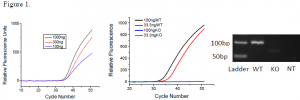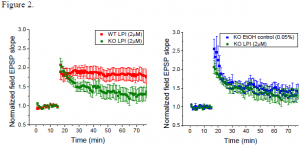Jeff Edwards and John Smith
I) Evaluation of academic objectives of the proposal
The objectives of this award were met, especially in regard to the mentoring focus of the award. The students have been mentored and trained in an effective manner as outlined in my Mentoring Plan (see below). This includes mentoring students in research, writing, publishing, presenting at conferences, acceptance to professional schools, etc. Indeed, all the students graduating from my lab during this time were accepted to the professional school of their choice (see students listed below). Research, especially where the students are actually involved in all aspects of it including data collection and analysis, as well as publishing can play a major role in their acceptance to professional schools and set them apart form other candidates.
Regarding the research some of the money went towards 4 peer-reviewed publications, while the majority went towards the proposed project, which is still underway, but data from it has been presented in poster format at 3 different international and regional conferences. There were many student co-authors on these manuscripts and abstracts.
Student research presentations given include at the international Society for Neuroscience meeting in San Diego, CA and Washington, DC; and the Intermountain Graduate Student Research Symposium. Data was also used to submit NIH grant proposals.
Overall, we have made excellent progress with the time and money that we have had to work with on this project, and in student mentoring. I am happy with the progress, which in no way could have happened without this MEG award to provide the needed supplies and student support over the last two years. We have really provided a successful and meaningful mentoring experience for the students involved, and at the same time produced a lot of meaningful and compelling data.
II) Evaluation of the Mentoring environment
The following is my philosophy of mentoring: 1) Teach the fundamental elements of hypothesis driven research. 2) Allow students to explore their own interests within the realm of the laboratory umbrella. 3) Provide students with the time, personal supervision and overall training they need to be successful individuals in the lab and in their futures, professionally and academically. 4) Use laboratory meetings, journal clubs, attendance at professional meetings, presenting posters as an essential way to train students to develop critical analyzing and thinking skills as well as presentation skills. 5) Encourage student development through grant writing, training experiences by allowing students to teach each other and collaborate through group work. 6) Encourage positive interactions with myself and others in the lab. 7) Prepare students with the professional skills required beyond the undergraduate degree in their schooling and professions by accomplishing the aforementioned aims.
To help accomplish this general goal of mentoring as listed above I have several evaluation endpoints for the students to accomplish and tools to do it. 1) Initially, I use an undergraduate training program as a tool to teach students. All undergraduates go through a training program before they can enter the lab to perform experiments. The training is a collaborative effort between my lab and several others with the overall goal of providing consistent, general laboratory training to all new students. This training includes safety, animal handling, and a variety of laboratory skills. All of this is done under the supervision of a trained assistant and the faculty. 2) New students entering the lab also receive 3-5 hours of background training together with me the first month they are in the lab. This background training is designed to update their basic understanding of learning and memory science and to get them excited about the research by explaining what the experiments are and what they will be doing in the lab and why. 3) All students are expected to acquire good, publishable data. This is ensured by weekly lab meetings where the students present their data and we review it together. I also watch students in the lab doing the experiments at least weekly to ensure the experiments are performed properly, that they are learning from the experience, and that they have a better mentored experience than undergraduates who are left to work on their own with little or no guidance. 4) They must learn to present, not just their data, but scientific information to others. Initially this is practiced at laboratory meetings with their own data, then students present at journal clubs and finally at conferences. Through this process they learn good oral communication skills, how to present data to others and get to know and discuss science with researchers from around the world. I had three graduate students and 10 undergraduates travel to different meetings to present their data in the last two years (department funds also helped with the travel costs for this many students). 5) I have my students apply for internal competitive research grants and my graduate students for NIH pre-doctoral grants. Four undergraduates were awarded ORCA grants in 2012 and three in 2013. This has given them the opportunity to research different project ideas, search scientific databases and write their own grants with minor editing help from me. I attempt to make this process as independent as possible, yet guided, providing an overview for how to write a successful grant application. 6) I want the students to publish. While I discussed this above I think it worth mentioning that I have many undergraduates who will be co-authors on manuscripts.
The research experience students received in my lab was a key for most getting acceptance into professional school. All my students who have finished have been accepted into the graduate or professional school of their choice (see section III below). In conclusion, the students in my lab are getting excellent mentoring and training as illustrated by the tangible products of research listed in section IV below. This experience is going to be useful in their future and in getting excepted and succeeding in the professional school of their choice, which I think is one of the main overall purposes of the MEG award.
III) List of students who participated
Profile of Undergraduate Students Previously Trained (2012–2013) Collectively, 100% of the students completing training in my lab in the last 2 years were accepted to the professional school of their choice.
Current undergraduates (18)
Many of my current students were involved as well. All these students plan to go on to pursue graduate, medical, dental, PA, physical therapy or MD/PhD degrees: Teresa St. Pierre, Christopher Gardner, Bethany Walker, Zach Hopkins, Brittney Harrison, Christopher Lyon, Chandler Childs, Michael Christensen, Dane Lyman, Jessica Glauser, Nathanael Christensen, Jordan Hill, Jacob Trotter, Taylor Ottesen, Samuel Lo, Samuel Holley, Sarah Davis and Scott Newton
All students were involved in one of 2 groups, with some doing electrophysiology and others doing molecular biology and immunocytochemistry. These students represent those who were mentored in my lab and acquired the data used for the grant applications, abstracts, publications and presentations listed above. Again, they also collectively were awarded 7 ORCA grants. The students also won 3 awards for their presentations at conferences in the last two years and two graduate fellowship awards. I have had some fantastic undergraduates who have done a great job with these projects.
IV) Description of results/findings
Again, we have published four manuscripts, many abstracts and used this data for two NIH grant proposals. We are currently writing an additional manuscript as well. One of our goals was to investigate the location and role of a novel orphan Gprotein coupled receptor, GPR55, which has not yet been characterized in the brain. We identified that this receptor physiologically enhances long-term potentiation, the cellular mechanism mediating learning and memory in the hippocampus of the brain. Using molecular biology we also identified the expression of this receptor in the hippocampus. The following figures includes just some of the data acquired using this MEG award. Data for other projects that were published can be found as a pdf file using PubMed to search for the following references. Data in these publications was acquired using the MEG awards:
Publications:
Taylor D., Burman PN, Hansen MD, Wilcox R., Larsen BR, Blanchard JK, Merrill CB, Edwards JG, Sudweeks, SN, Wu J, Arias HR, and Steffensen SC. 2013. Nicotine Enhances the Excitability of Gaba Neurons in the Ventral Tegmental Area via Activation of Alpha 7 Nicotinic Receptors on Glutamate Terminals. Biochemistry and Pharmacology. S1.ISSN: 2167-0501.
Merrill C, McNeil M, Williamson R, Poole B, Nelson B, Sudweeks S and Edwards JG. 2012. Identification of mRNA for endocannabinoid biosynthetic enzymes within hippocampal pyramidal cells and CA1 stratum radiatum interneuron subtypes using quantitative real-time PCR. Neuroscience. 218:89-99. Epub 2012 May 17. DOI: 10.1016/j.neuroscience.2012.05.012. NIHMS 387707. (impact factor: 3.380) Jensen T and Edwards JG. 2012. Calcineurin is required for TRPV1-induced long-term depression of hippocampal interneurons. Neuroscience Letters. 510:82-87. (impact factor: 2.180).
Data:
Figure. 1. GPR55 is expressed in both rat and mouse hippocampus, while absent from our knock-out mouse. A) Relative Fluorescence from quantitative RT-PCR on rat hippocampus demonstrating a dose dependent presence of GPR55. Template is made from cDNA of whole hippocampus. B) Relative Fluorescence of hippocampal WT and KO mice using cDNA at concentrations of 100 ng and 33.3 ng. Inset: PCR gel from RTPCR reaction. The amplicon size of GPR55 is 100 base pairs (bp), which is noted to be present in WT sample, not present in KO or no template (NT) control. The band on the gel of the WT cDNA was cut out and sequenced as GPR55.
Figure 2. The GPR55 agonist LPI induces enhanced hippocampal CA1 pyramidal cell LTP in WT mice, which is not present in GPR55 KO mice. A) In GPR55 animals LPI (2 μM; n=9) did not alter LTP compared to those exposed to ethanol controls (0.05%; n=8). B) LPI experiments from KO and WT mice compared together demonstrate a significant (p < 0.05) enhancement of LTP in WT (181%) compared to KO GPR55 mice (146%). Error bars indicate SEM.
V) Description of how the budget was spent
The following is a list of approximately how much in each major category was spent using the MEG funds awarded.





